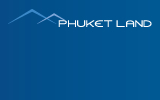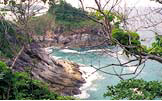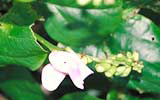Further Reading:
Thai roofs in Phuket
Last month we were asked about the architectural influences seen in Phuket's modern residential developments, along with a couple of examples of developments or villas where traditional steep Thai roof styles have been integrated successfully.
The steep Thai 'temple style' roof was popularised in Phuket in the early 90's with it's adoption by The Amanpuri Hotel at Surin and for a time such roofs styles became the most obvious design moniker in the rise of modern residential homes aimed especially at foreign buyers. Clearly the Amanpuri were looking for a definitively Thai signature to add to their hotel and villas. Perhaps this was as much about branding as practicality. It certainly made a lot of sense allowing Phuket to be marketed as unmistakably Thai in contrast to Bali.
As quality resort and residential property became popular, it was a natural progression for developers to use the same design styles. Taking the Amanpuri's lead, a number of Thai and then western developers created signature developments with steep Thai roofs. Amongst the early adopters was K. Weersak at (Ayara) Baan Thai Cherng Ley managed residential estate, which was sold between 1997 and 2002 and included 3 to 5 bedroom villas and laetr a small resort hotel component. These properties were at the upper end of the market, both price and geographically so, being on the hillside overlooking Surin beach. Others were Lameson Villas and Nakatani Village both at Kamala and also in prominent positions which ensured their recognition as iconic estates. K. Weerasak at Baan Thai Cherng Ley (who is also developing Ayara Kamala with similar roof designs) had been a main contractor at Amanpuri and his use of a Thai roof and wood clad ceilings, wood floors and window frames and colour schemes were reflective of the Amanpuri and themselves were then aped by a number of other developments island wide.
It is noteworthy to add that at this time, Phuket was reasonably well known by the expat crowd in HK and SE Asia but less so as a holiday home market for continentally based Europeans. As a lure for this market and to create a uniqueness and separate identity from Bali which had long had a successful villa market, the steep Thai roof proved an exceptionally good marketing tool. One could show your dream home to friend far afield and the style clearly said 'Thailand'. What is interesting is that in many respects this was the application of style over substance, and of image over practicality, a view perhaps supported by later modifications and movement away from the more extreme interpretations of this roof style. The purest application of the design into homes with separate living pavilions as at the Views on Chalong Bay was a relatively short lived affair. Even as separate pavilion villas were being marketed and sold, developers were modifying their designs to provide integrated rather than totally distinct living areas and incorporate shallower lower portions in addition to the steeper top part of the roof.
Whilst Steep Thai roofs gave an unmistakable stamp of origin to a buyers villa, the irony was that they are at best an import from the central and northern areas of Thailand and at worst, for some Thai commentators, a crude and tasteless appropriation of a style utilised by Royal palaces and Thai temples. Indeed, as we take clients around such developments and homes , our Thai staff often chuckle that we are going to the temple. One development in Nai Harn with very obviously steep Thai roofs was (is still ?) locally known as 'Wat Farang'
Apart from questions of stylistic propriety, practicality issues have dogged these designs and ultimately have reduced their popularity amongst developers and buyers. Steep roofs are by their nature larger, more complex and more expensive to build and maintain than less steep designs. Cladding the ceilings in wood is also a large cost option and can create quite a dark and traditional feel to the homes. Hotels such as Amanpuri wanted to display, correctly or incorrectly, a quintessential Thainess, where recognition and traditional motifs, especially the incorporation of lots of expensive teak wood was all a means to an end. The villa market has now matured and developed to a point where buyers even , hotel guests do not require such overt Thai associations to draw them to the island, which is allowing architects to experiment with other less recognisable Asian roof designs as well as modernist concepts or blends of the two.
Originally most buyers were in Phuket in the high/dry season and the pavilion nature of these pavilion homes and suites worked well. Indeed pavilion style properties still work well for multiple couples or large family groups sharing one property but wanting additional privacy. However, the transition of such a home style to Phuket with it's maritime climate of unstable, wet weather presents problems for this separated villa style. The establishment of Dulwich College (now the British International School of Phuket) along with better regional flight connections and the expansion of Internet provision and shopping facilities has opened up the housing market for year round residents who want practicality above a niche style suited to dry weather and holiday usage. If a family wants to have a practical integrated family living space, then a western roof design or shallower Asian style is often the preferred choice for developers and buyers. Such longer term residential usage of villas by foreigners in Phuket also means of course, that people want reasonable storage space for closets and cupboards etc in rooms. In a hotel suite context, the roof can be proportionate to the room size as closet space is limited. Try to grow room sizes however, and this leads to a dramatic increase in the height, mass and cost of these steep roofs. We have interesting examples dotted around the island where buyers attracted by the concept of a uniquely Thai design, but wanting a year round home, now have enormous Thai roofs which look like private temples or sails on large yachts.
The steep Thai roof clearly has it's place in Phuket villa development history, and was very successful in bringing buyers to our shores. One additional hindrance however has been that on the preferred west coast, sea and beach view land is usually quite steep. In multi home developments, tall Thai roofs create problems for view lines from villas at the rear of developments. Thus, even the topography of prime land in Phuket has put pressure on this style and caused a rethink to shallower roofs and even flat roofs.
Such was their early popularity, that apartment developments also considered such roofs. commercial realism most often won out however, and for example Maan Tawan on the west coast ( next to the Banyan tree, which also used the style) early in 2002 envisaged Thai roofs and later also the Royal Phuket Marina, yet both scrapped these for roof top terraces with private pools for their penthouses. The Royal Phuket Marina is however, interesting as the developer decided to keep this style of roof for the signature standalone Villas. Partly this may have been due to the developers attachment to and liking of the Amanpuri style, but it was also due to a conscious decision, much as the Amanpuri themselves had made, to create a unique concept and brand the Marina as something different from those in Sydney, southern Europe and Florida etc by creating Thainess.
Speak to developers and buyers now and we still find some who wish to pursue this style. As a broad generalisation we see that most Western developers have moved on to a blended Asian roof style which would be also be lower in absolute height. They may choose different roof tiles or shingles or have certain gable end or apex features to differentiate their designs. Certain, perhaps inexperienced western developers new to the Island, who haven't followed these evolutions, and particularly small scale Thai developers / builders who have now adopted the style as 'traditional' are the main supporter of the 'temple' style designs, A popular mutation is to have a thoroughly Western integrated home with a Thai 'hat' on top to define the homes location. Many of these can be both practical and aesthetically pleasing. Green Hills in Rawai is a very pleasant looking example which garners a lot of favourable comment. However, one is less likely to see the very tall examples that you could find being promoted around 2001 - 2003. Buyers who have individual villa designs built for them as one offs are also still likely to seriously consider steeper roof designs.
The Phuket market has grown sufficiently in scale and maturity for there now to be many different styles. If there is a current commonality it is a design which is practical and cost effective but one which also has a degree of 'Asianness' about it to give it a geographical context even if this isn't exactly any one particular Thai design.


